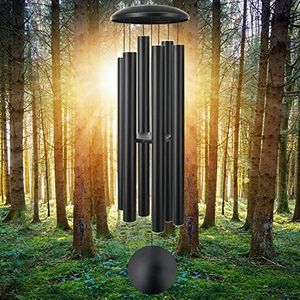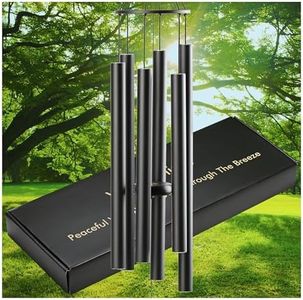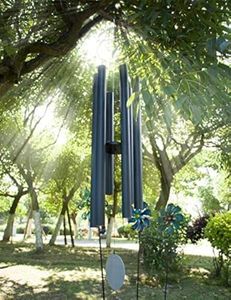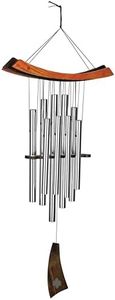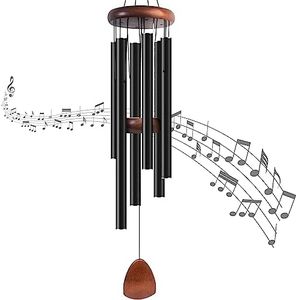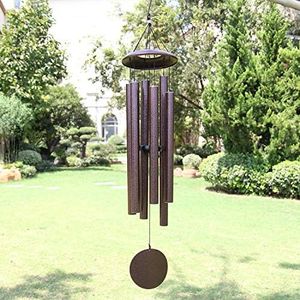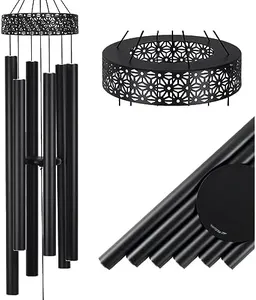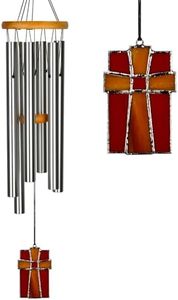We Use CookiesWe use cookies to enhance the security, performance,
functionality and for analytical and promotional activities. By continuing to browse this site you
are agreeing to our privacy policy
10 Best Wind Chimes
From leading brands and best sellers available on the web.Buying Guide for the Best Wind Chimes
Wind chimes are not just decorative pieces for your home or garden; they're also musical instruments that create soothing sounds with the help of the wind. Choosing the right wind chime is about matching the look, size, sound, and material to suit your personal style, location, and the atmosphere you want to create. By understanding the key features of wind chimes, you can pick one that brings the perfect melody and ambiance to your space.MaterialMaterial refers to what the wind chime is made from, such as metal, wood, bamboo, glass, or ceramic. This is important because different materials produce different tones and sounds, which can range from soft and mellow to bright and resonant. Metal chimes, for example, tend to give clearer and longer-lasting notes, while bamboo or wooden chimes offer a more gentle and earthy sound. To choose the right material, consider what kind of sound you enjoy and how the chime will look in your chosen space. If you want vibrant melodies, go for metal; for a softer, natural vibe, wood or bamboo might be ideal.
LengthThe length of a wind chime refers to how long the tubes or components are, which influences the pitch and volume of the sound produced. Longer chimes produce deeper, richer tones, while shorter chimes make higher, more tinkling notes. Think about where you’ll be placing your chime: if you want soothing, bass-like sounds for a large garden area, longer chimes work best. For a smaller balcony or to add a hint of sound indoors, shorter chimes are a better fit.
Number of Tubes or PiecesThis spec is about how many tubes or pieces the wind chime has, which affects the complexity and fullness of its sound. More tubes usually mean a wider range of notes and a more layered melody, whereas fewer tubes create a simpler and sometimes more delicate sound. If you prefer a more active and varied soundscape, consider chimes with more tubes. For a subtle, minimalist effect, go with wind chimes that have fewer tubes.
Sound Quality/ToneSound quality or tone refers to how the chime actually sounds—whether it's soft and mellow, clear and crisp, or even slightly echoing. This quality is influenced by the design, tuning, and material. Think about the mood you want to set: a meditative, calm space might benefit from mellow or deep tones, while bright, cheerful tones bring energy to a space. Listen to samples if possible, or read descriptions to ensure the tone will match your preferred ambiance.
Design and AppearanceThe design and appearance relate to the shape, color, and visual style of the wind chime. While this doesn’t affect the sound, it does influence how the chime fits with your home or garden decor. Choose a design that complements your style—whether you like something simple and natural or colorful and decorative. The right visual choice ensures your wind chime looks as good as it sounds and enhances the beauty of your environment.
Weather DurabilityWeather durability is about how well the wind chime can withstand elements like rain, wind, and sunlight. Outdoor chimes need to be resistant to rust, fading, or cracking to last over time, while indoor chimes don’t need to be as hardy. If you plan to hang your chime outside, look for weatherproof materials or finishes so it stays attractive and works well even after lots of exposure to the elements.


